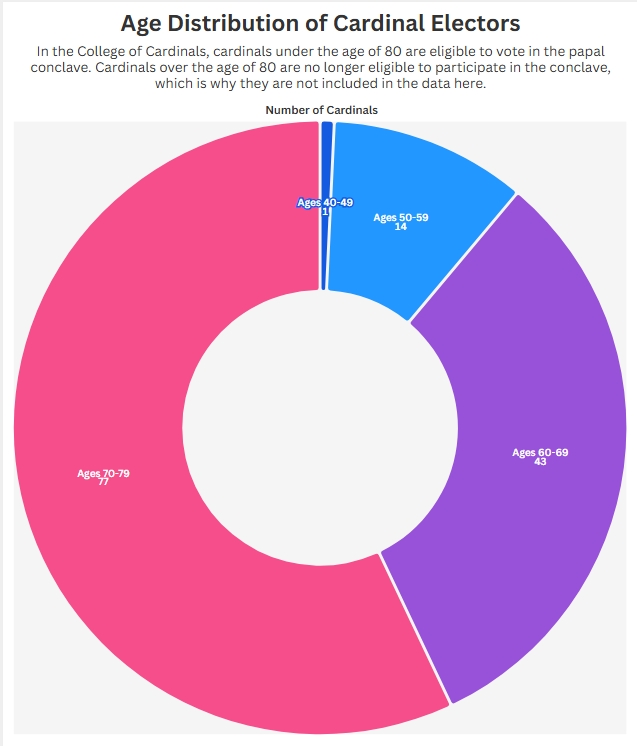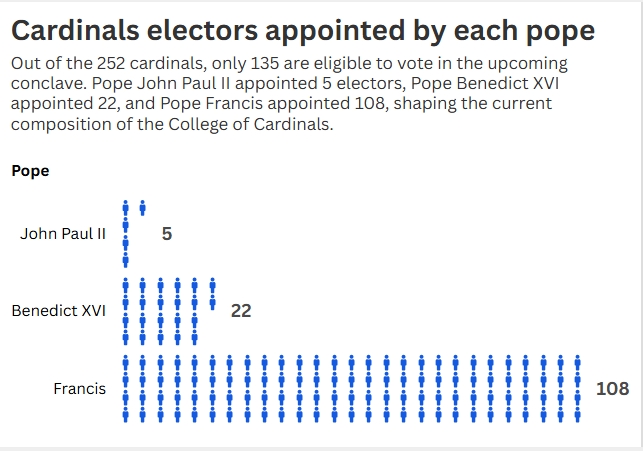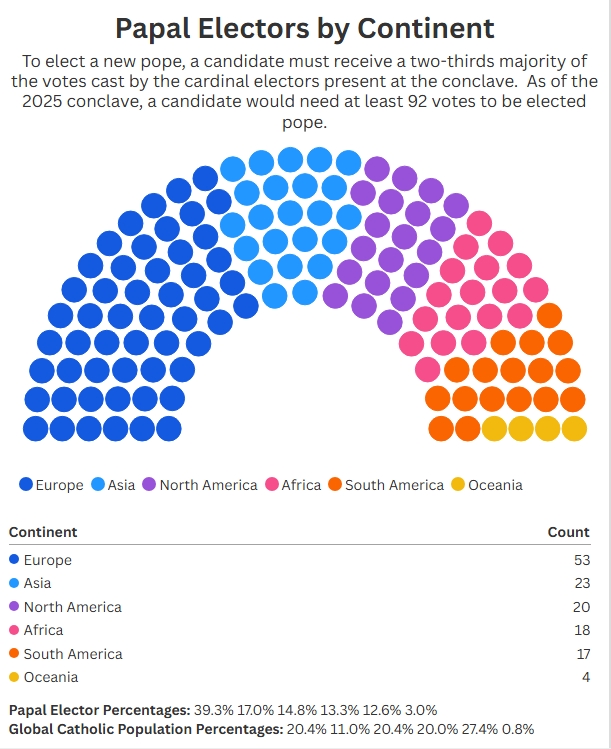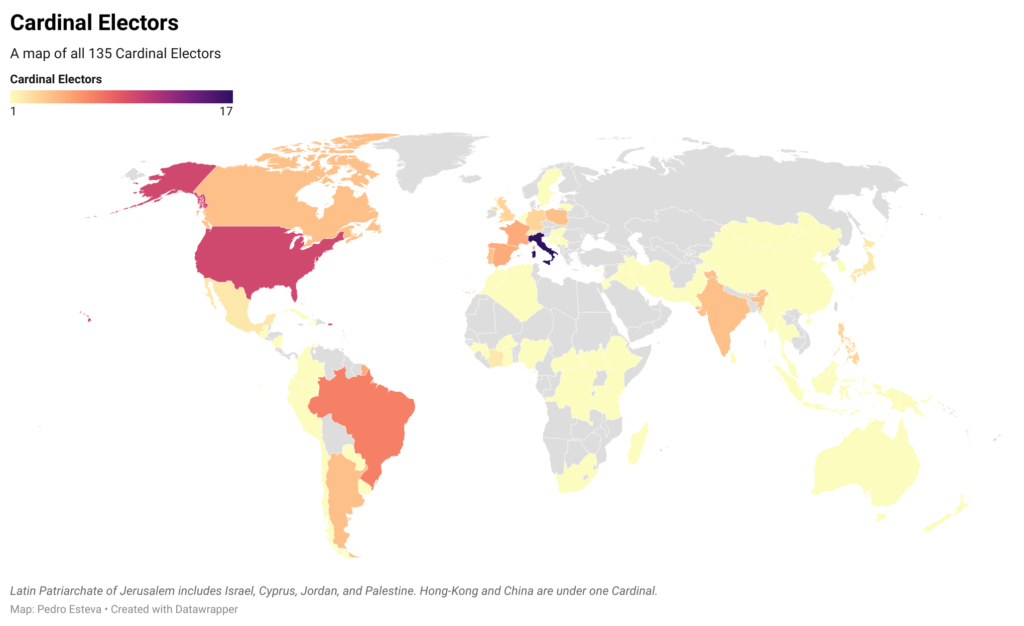The papal conclave of 2025 will begin following the passing of Pope Francis, whose 12-year papacy profoundly shaped the Catholic Church. The conclave, expected to take place on May 7, faces the difficult task of selecting a successor—one who must navigate a diverse Church and lead it through a complex global landscape marked by various crises and social debates.
Election
The election process, though shrouded in secrecy, is well-documented and carefully structured by centuries-old rules, with a few modern updates. Of the 252 active cardinals, only 135 are eligible to vote for the next pope.
While any Catholic male who has “reached the age of reason” could theoretically be chosen, no one outside of the College of Cardinals has been elected to the papacy since the late 1300s. It makes sense—who better to lead the Church than someone familiar with the complexities of the papacy?
Secrecy and privacy are the chief cornerstones of the conclave. Cardinals are enclosed in the Sistine Chapel and adjacent areas, all sealed off to prevent external influence. Communication with the outside world is strictly forbidden. The Vatican employs signal jammers to block transmissions, and thorough security sweeps are conducted to ensure no surveillance devices are present.
Ballots are counted and burned each day to maintain secrecy. If no pope is elected, black smoke rises from the Sistine Chapel chimney. White smoke signals the successful election of a new pope. A two-thirds majority is required for election, as reinstated by Pope Benedict XVI in Normas Nonnullas. Once a candidate achieves the required majority, he is asked if he accepts the election. Upon acceptance, he becomes pope and selects a papal name before being publicly announced.
History and the Future
The 2025 conclave is not just about electing a new leader it will shape the future direction of the Church. Will the next pope continue Pope Francis’s legacy or go another direction?
Professor Kurt Martens, expert in canon law, noted, “History shows a trend of cardinals electing a candidate ‘to correct’ some aspect of the last pope’s pontificate. After a short pope, we have a tall pope. After a thin pope, we have a fat pope. After an intellectual, we have more of a pastoral person.” But he added, “There are no hard and fast rules.”
However, concerns have been raised that the Church risks a schism if an ‘orthodox’ leader is not chosen. As Cardinal Gerhard Müller warned, “The new pope must be orthodox—not a liberal nor a conservative.” He emphasised, “The question is not between conservatives and liberals but between orthodoxy and heresy,” stressing the responsibility the cardinals bear. “I hope cardinals are not so influenced by what they are reading in the headlines.”
Cardinal Pablo Virgilio David offers a different perspective, cautioning against viewing the conclave as a political election. “There are no candidates in a conclave… No one will give dole-outs. No one will mount a campaign,” he said. “The conclave is a retreat where we must pray and discern not whom we want to elect, but whom the Lord wants to succeed Pope Francis.”
The media frenzy, fuelled by both faithful Catholics and secular onlookers, has turned the election into a spectacle of speculation. But Cardinal Müller cautioned, the conclave is not a “power game” played by “stupid people looking to manipulate,” as depicted in films like Conclave (2024). Professor Martens echoed this, emphasising, “The cardinals have done their homework. They know their duty starts the moment they receive their red hats.”
Regardless of the speculations, we can only pray that the Holy Spirit guides the cardinals in their momentous task.
With this in mind, we now turn our attention to the cardinal electors, whose choices will shape the future of the Church.


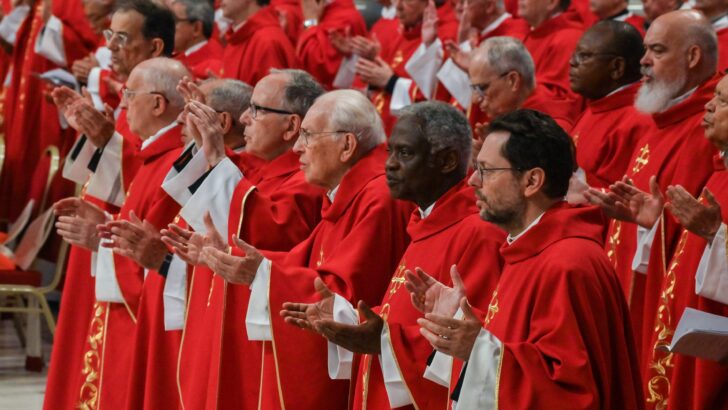 Cardinals concelebrate Mass in St. Peter's Basilica at the Vatican April 29, 2025, on the fourth day of the "novendiali" -- nine days of mourning for Pope Francis marked by Masses. (CNS photo/Chris Warde-Jones)
Cardinals concelebrate Mass in St. Peter's Basilica at the Vatican April 29, 2025, on the fourth day of the "novendiali" -- nine days of mourning for Pope Francis marked by Masses. (CNS photo/Chris Warde-Jones) 
